The Pacific Northwest transforms into a colorful paradise when warmer months arrive. Snow lingers in alpine regions, while lower-elevation trails burst with vibrant blooms. From golden balsamroot to delicate lupines, the landscape becomes a living canvas.
Iconic spots like the Columbia River Gorge offer early displays of wildflowers, including shooting stars and camas lilies. Meanwhile, Mount Rainier’s meadows dazzle with avalanche lilies and paintbrushes as summer approaches.
This guide shares expert-picked trails, bloom timing, and tips to enjoy these natural wonders responsibly. Whether you seek a challenging climb or a leisurely stroll, there’s a path for every adventurer.
Table of Contents
Key Takeaways
- The region boasts diverse blooms, from early spring to late summer.
- Lower-elevation areas like the Columbia River Gorge bloom first.
- Alpine trails offer later but equally stunning displays.
- Iconic flowers include balsamroot, lupines, and avalanche lilies.
- Conservation ensures these landscapes thrive for future hikers.
Welcome to Spring Wildflower Season in the PNW
As winter fades, the PNW awakens with bursts of color across its landscapes. Lower elevations like the Columbia River Gorge erupt in gold and purple, while alpine areas remain snow-capped.
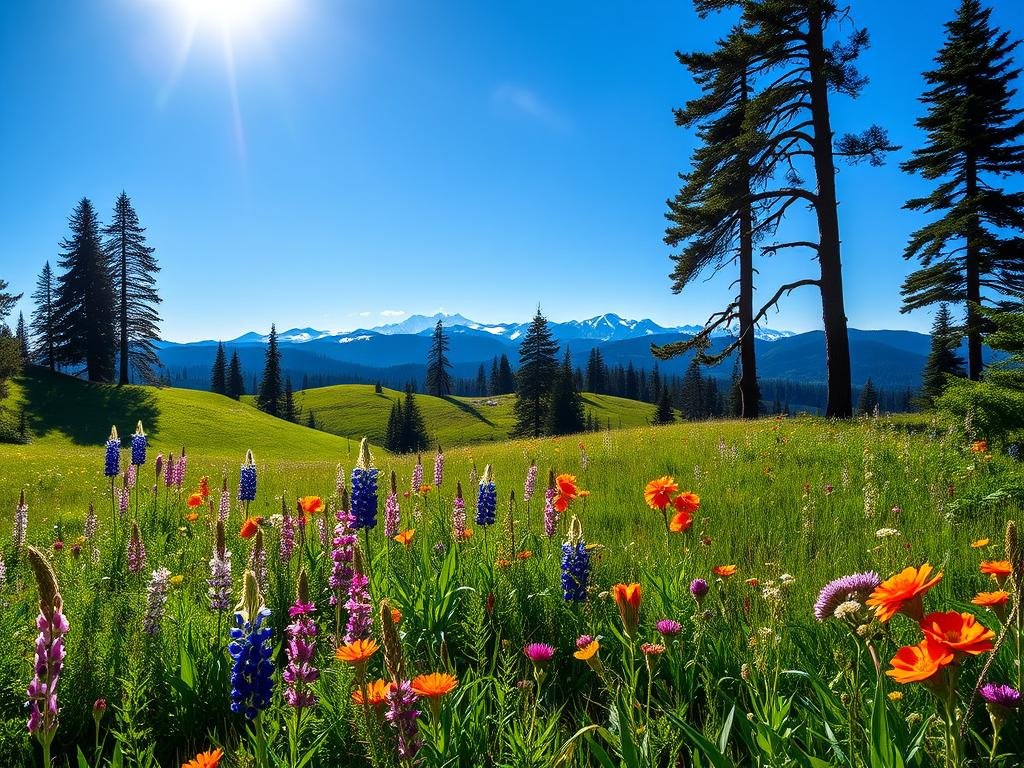
Geographic diversity means blooms appear in waves. Southern and eastern regions start first, with central Washington’s scablands offering unique displays. Coastal forests and high-altitude meadows follow weeks later.
The Columbia River Gorge is a standout for early-season hikes. Trails here feature balsamroot blankets and lupine accents against cliffside vistas.
| Region | Peak Bloom | Key Flowers |
|---|---|---|
| Low Elevations (Gorge) | April–May | Balsamroot, Lupines |
| Central Scablands | May | Phlox, Poppies |
| Alpine Zones | June–July | Avalanche Lilies, Paintbrush |
Microclimates further stagger wildflower timing. Sunny slopes bloom earlier, while shaded forest trails delay the show. This natural rhythm extends the viewing window across months.
Best Time to See Wildflowers in the Pacific Northwest
Timing your visit right unlocks the most spectacular floral displays. The region’s diverse geography creates a rolling bloom season, stretching from April to August.
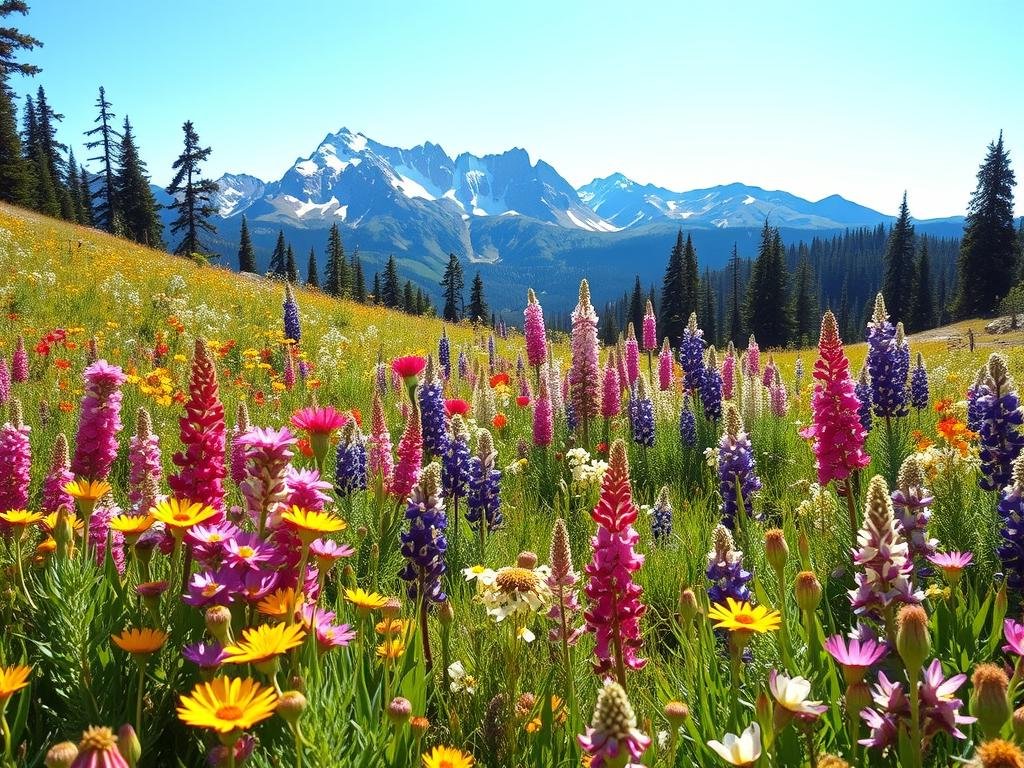
Factors Affecting Bloom Times
Several elements dictate when flowers emerge:
- Elevation: Trails like Dalles Mountain Ranch (1,800’) bloom weeks before alpine routes like Chain Lakes Loop (5,000’).
- Temperature: Warm springs accelerate blooms, while lingering snow delays high-altitude shows.
- Sunlight: South-facing slopes in the Columbia River Gorge burst with color earlier than shaded forests.
Regional Variations in Bloom Seasons
Coastal areas like Cape Horn peak in April, while inland spots like Yakima’s Cowiche Canyon shine by May. Alpine meadows, such as those near Mount Rainier, dazzle from July onward.
| Area | Peak Period | Notable Blooms |
|---|---|---|
| Coastal (e.g., Columbia Gorge) | April–May | Balsamroot, Lupines |
| Inland (e.g., Yakima) | May–June | Phlox, Desert Parsley |
| Alpine (e.g., Mount Rainier) | July–August | Avalanche Lilies, Paintbrush |
Climate change is shifting traditional calendars. Warmer winters may cause earlier blooms, while erratic snow alters alpine schedules. Check resources like WTA trip reports for real-time updates.
Top Spring Wildflower Hikes in the Pacific Northwest
Golden slopes and floral carpets await on these breathtaking trails. Whether you seek historic charm or alpine panoramas, each route offers a unique spectacle.
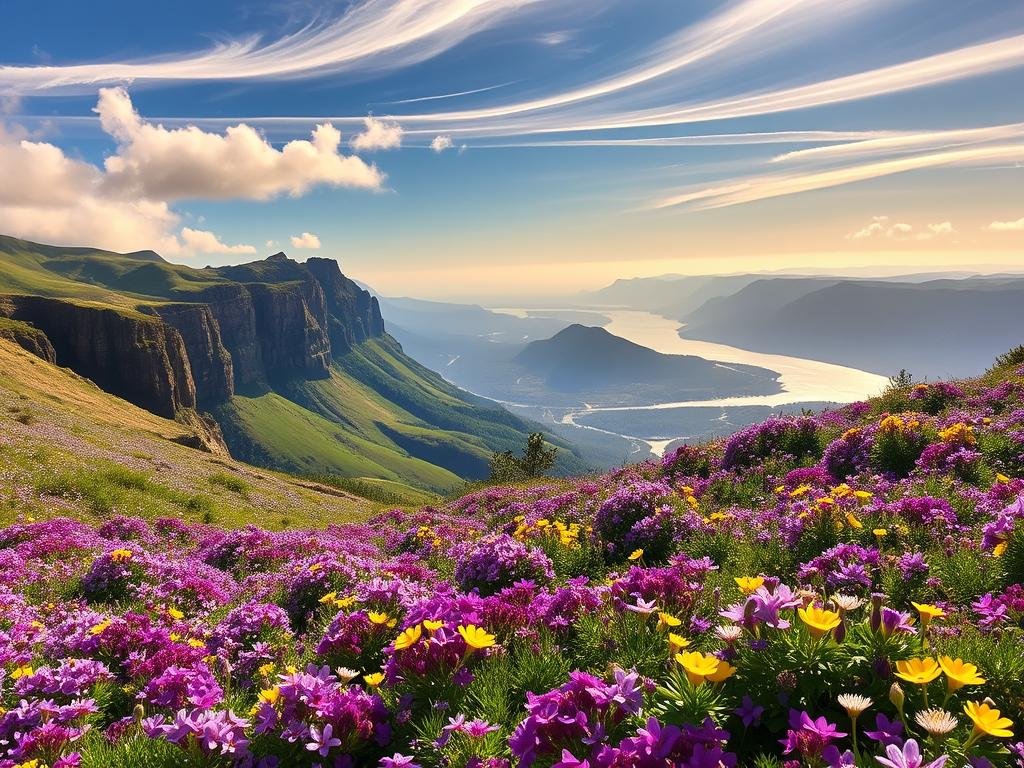
Dalles Mountain Ranch: Golden Hills and Historic Charm
This 11.8-mile trail winds through rolling hills blanketed in balsamroot. Vintage trucks and relics dot the landscape, adding rustic charm.
Pro tip: Wind gusts are common—pack layers and secure your hat. A Discover Pass is required for parking.
Lyle Cherry Orchard: A Hidden Gem
Discover a 7-mile exposed route with oak woodlands and basalt cliffs. The Columbia River Gorge unfolds below, offering views worth every step.
Memaloose Hills: Serene Meadows
A 4.5-mile trail rewards hikers with solitude and river vistas. Lupines accent the meadows, peaking in late May.
Rowena Crest: Short but Stunning
Ideal for families, this 2-mile loop bursts with color. Photographers flock here for sunrise shots over the Columbia River Gorge.
Tom McCall Preserve: Classic Balsamroot
Walk a 3.4-mile loop through fields of golden blooms. Arrive early to secure parking and enjoy McCall Point’s panoramic views.
Dog Mountain Loop: Challenging Blooms
This steep 6.9-mile hike demands permits on weekends. Your effort is repaid with unmatched views and lupine-covered slopes.
Essential Tips for Wildflower Hiking
Exploring vibrant meadows requires thoughtful preparation and respect for nature’s delicate balance. Follow these tips to protect ecosystems while enjoying their beauty.
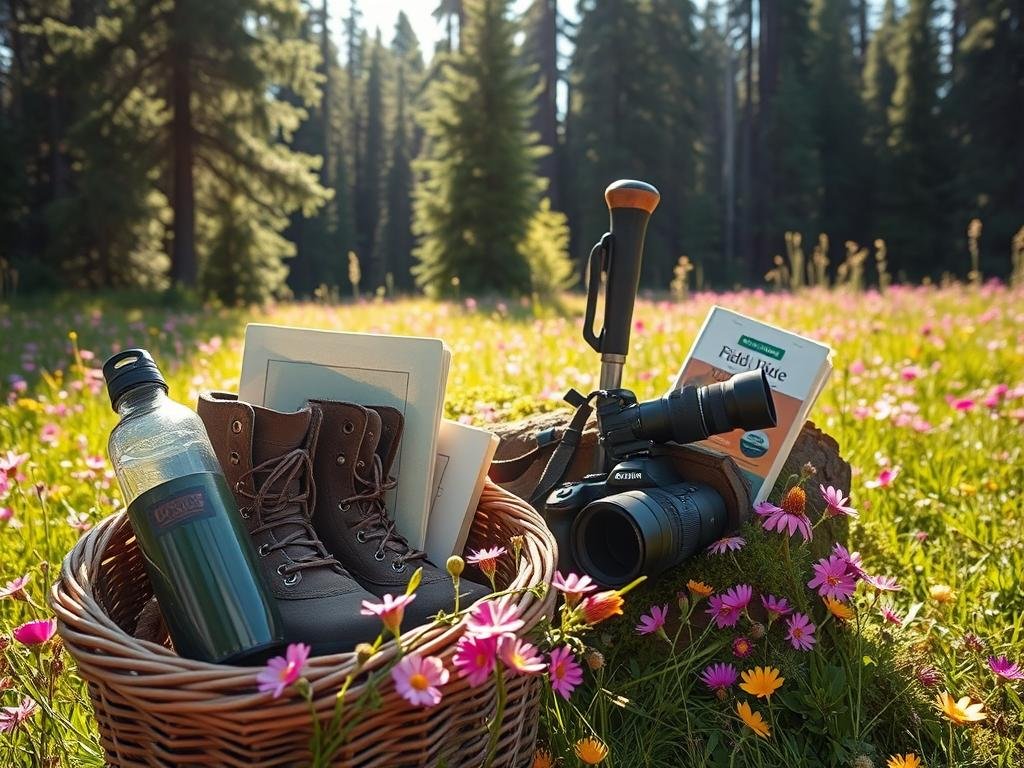
Trail Etiquette and Conservation
Stay on designated paths to shield fragile root systems and avoid picking flowers. Even organic waste like apple cores disrupts habitats—pack everything out.
For photography, use zoom lenses instead of stepping off the trail. Crowdsourced reports on WTA’s platform help hikers track real-time bloom conditions.
What to Pack for a Wildflower Adventure
Essentials include layered clothing, a windbreaker, and sun protection. Sturdy boots and poles aid steep sections, while field guides enhance the experience.
- Navigation: Map, compass, and Discover Pass for parking.
- Safety: First aid kit, extra water, and energy snacks.
- Extras: Polarizing filter for glare-free flower shots.
Popular spots like Dog Mountain require permits—plan ahead to secure access during peak weekends.
Beyond the Trails: Other Wildflower Hotspots
Urban gardens and alpine vistas offer fresh ways to experience nature’s floral artistry. For time-crunched explorers, the Washington Park Arboretum displays curated collections, while Bellevue Botanical Garden showcases native species.

Mount Rainier’s Reflection Lakes mirror avalanche lilies in early summer, and the Skyline Trail dazzles with subalpine meadows. Nearby, Sunrise Visitor Center provides drive-up access to panoramic mountain views.
For multi-day trips, book camping through Hipcamp near Methow Valley. These sites place you steps from lupine fields and shaded forest trails.
Ranger-led walks in Olympic National Park reveal hidden blooms. Guides help identify flowers while teaching conservation practices during peak season.
Prefer wheels to boots? Rowena Crest Overlook delivers Insta-worthy balsamroot vistas from your car—perfect for golden hour shots.
Conclusion
Few regions rival the PNW’s floral diversity and extended bloom seasons, stretching from March to August. Whether you seek iconic trails like Mount Rainier or hidden gems like Methow Valley, each offers a unique experience.
Check WTA reports for real-time updates on peak blooms. Share your favorite finds with #PNWWildflowers to inspire fellow adventurers.
Ready to explore? Dive deeper with wildflower identification guides or curated trail lists. Every step reveals nature’s artistry—time your visit for the most vibrant displays.
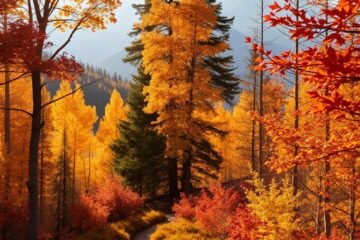
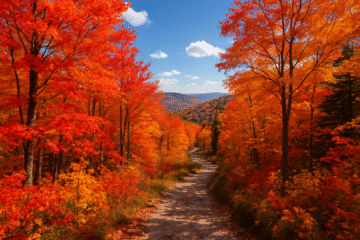
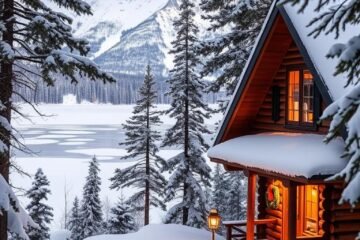
0 Comments